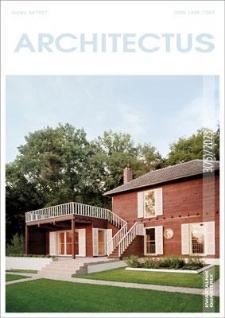Dolnośląska Biblioteka Cyfrowa udostępnia 109 805 obiektów cyfrowych
Obiekt
Tytuł: The role of isolated farmsteads in the open landscape protection on the example of Kashubia
Tytuł odmienny:
Rola zagród samotniczych w ochronie krajobrazu otwartego na przykładzie Kaszub
Autor:
Współtwórca:
Opis:
Architectus : Pismo Wydziału Architektury Politechniki Wrocławskiej, 2023, nr 3 (75), s. 49-59
Abstrakt:
Wydawca:
Oficyna Wydawnicza Politechniki Wrocławskiej
Miejsce wydania:
Data wydania:
Typ zasobu:
Identyfikator zasobu:
doi:10.37190/arc230305 ; oai:dbc.wroc.pl:126251
Źródło:
<sygn. PWr A5234III> ; kliknij tutaj, żeby przejść ; www.architectus.arch.pwr.wroc.pl ; kliknij tutaj, żeby przejść
Język:
Powiązania:
Architectus : Pismo Wydziału Architektury Politechniki Wrocławskiej ; Architectus : Pismo Wydziału Architektury Politechniki Wrocławskiej, 2023 ; Architectus : Pismo Wydziału Architektury Politechniki Wrocławskiej, 2023, nr 3 (75)
Prawa:
Pewne prawa zastrzeżone na rzecz Autorów i Wydawcy
Prawa dostępu:
Dla wszystkich zgodnie z licencją
Licencja:
CC BY-NC-ND
Lokalizacja oryginału:
Tytuł publikacji grupowej:
Kolekcje, do których przypisany jest obiekt:
- Dolnośląska Biblioteka Cyfrowa > Uczestnicy Konsorcjum > 01. Politechnika Wrocławska > Czasopisma > Wydane w PWr > Architectus
- Dolnośląska Biblioteka Cyfrowa > Zasoby > 2. Czasopisma > Czasopisma współczesne
- Dolnośląska Biblioteka Cyfrowa > Dziedziny nauki > 2. Nauki inżynieryjno-techniczne
Data ostatniej modyfikacji:
11 kwi 2024
Data dodania obiektu:
11 kwi 2024
Liczba wyświetleń treści obiektu:
153
Wszystkie dostępne wersje tego obiektu:
https://www.dbc.wroc.pl/publication/165113
Wyświetl opis w formacie RDF:
Wyświetl opis w formacie OAI-PMH:
| Nazwa wydania | Data |
|---|---|
| The role of isolated farmsteads in the open landscape protection on the example of Kashubia | 11 kwi 2024 |
Obiekty Podobne
Pieczonka, Jacek
Kajdanek, Katarzyna Smoliński, Grzegorz
Konior, Tomasz
Kociszewski, Karol
Instytut Historii Architektury Sztuki i Techniki Politechniki Wrocławskiej
Instytut Historii Architektury Sztuki i Techniki Politechniki Wrocławskiej
Instytut Historii Architektury Sztuki i Techniki Politechniki Wrocławskiej
























